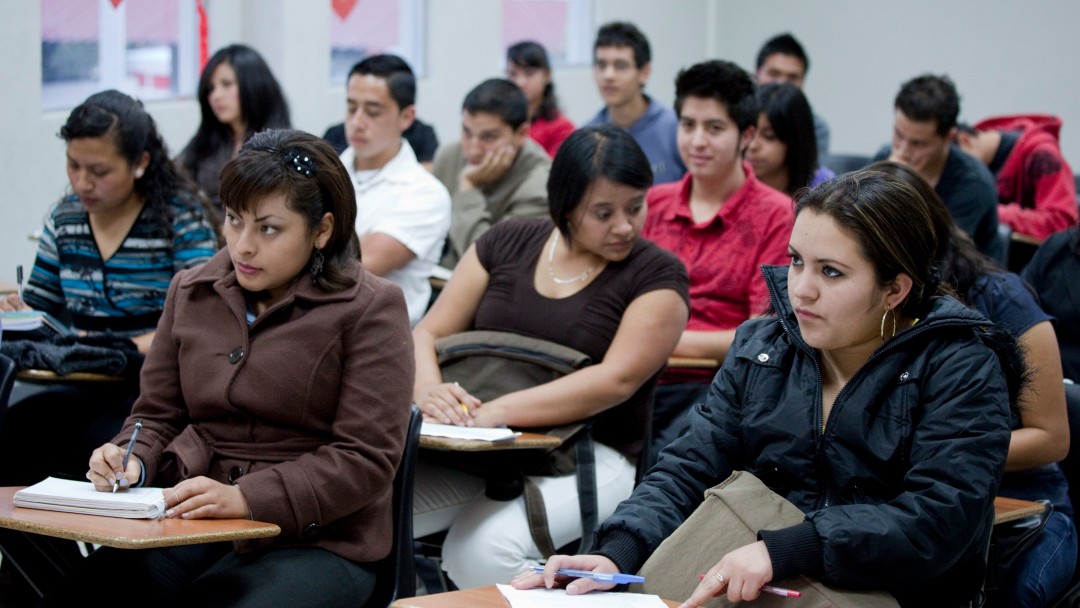News from 2017-12-01 / KfW Development Bank
Higher education loans in seven Latin American countries
Issued by microfinance institutes - new product proves to be successful

Over 5,000 school children and students have already benefited from the Higher Education Finance Fund (HEFF), which works with microfinance institutes to issue higher education loans in seven Latin American countries. Working on behalf of the Federal Ministry for Economic Cooperation and Development (BMZ), KfW is the fund's largest shareholder, with the fund forming a pilot initiative within the development bank's portfolio. An external evaluation has now concluded that this tool is successful and also suited to other regions.
KfW founded the HEFF in 2011 to provide young people in Latin America with access to vocational training or higher education. The fund's main goal is to help talented young people from lower-income population groups to receive a higher education. The reasoning for this is that Latin America is a continent where the distribution of educational opportunities is particularly unequal, due in part to the comparatively high number of private schools and universities – an obstacle that is very difficult for children from poorer families to overcome.
HEFF's aim is to tackle this trend by issuing educational and student loans, similar to the services offered by KfW in Germany. To help achieve this goal, KfW has invested a total of EUR 9.3 million in the fund, which is also supported by other donors, such as CAF, a Latin American development bank. The fund itself also works closely with almost a dozen different microfinance institutions (MFIs) in Bolivia, Costa Rica, the Dominican Republic, Honduras, Paraguay and Peru. The MFIs then issue loans worth an average of $3,000 to young people keen to continue their education.
Slow on the uptake but expectations have since been exceeded
The demand for higher education loans has exceeded all expectations, recently rising much quicker than predicted. Original plans predicted 2,700 loan agreements to be taken out by the end of 2017; however, over 5,000 loans had already been issued by June of this year alone.
Nevertheless, this has not always been the case. To begin with, the product in its original form – student loans provided by MFIs – did not really catch on. An external evaluation by Marulanda Consultores has now not only verified that the product is generally suited to the market, but it also looked into the reasons behind the slow uptake.
The study showed that the original design required a few adjustments. For instance, the original assumption that student loans would appeal to existing customers at microfinance institutes turned out to be wrong. Instead, the study showed that potential borrowers require separate sales channels, such as alliances with educational institutions.
Target group reached following adjustments
Furthermore, the majority of potential customers preferred smaller loans with shorter terms than the original plans set out. Once the institutes had implemented these changes along with a few more, they were able to reach their target group and issue the anticipated number of loans – even managing to significantly surpass it.
This is reflected in the evaluation, which concludes that adapted educational loans do not just appeal to microfinance institutions because they are able to tap into new market segments and customers, but also because these loans are profitable and socially responsible. André Ahlert, a Head of Division at KfW, sums things up: "Loans that are adapted to a country's cultural habits and students' needs help to achieve more equality in education."

Share page
To share the content of this page with your network, click on one of the icons below.
Note on data protection: When you share content, your personal data is transferred to the selected network.
Data protection
Alternatively, you can also copy the short link: https://www.kfw-entwicklungsbank.de/s/enzBWrMC.Bs0A
Copy link Link copied